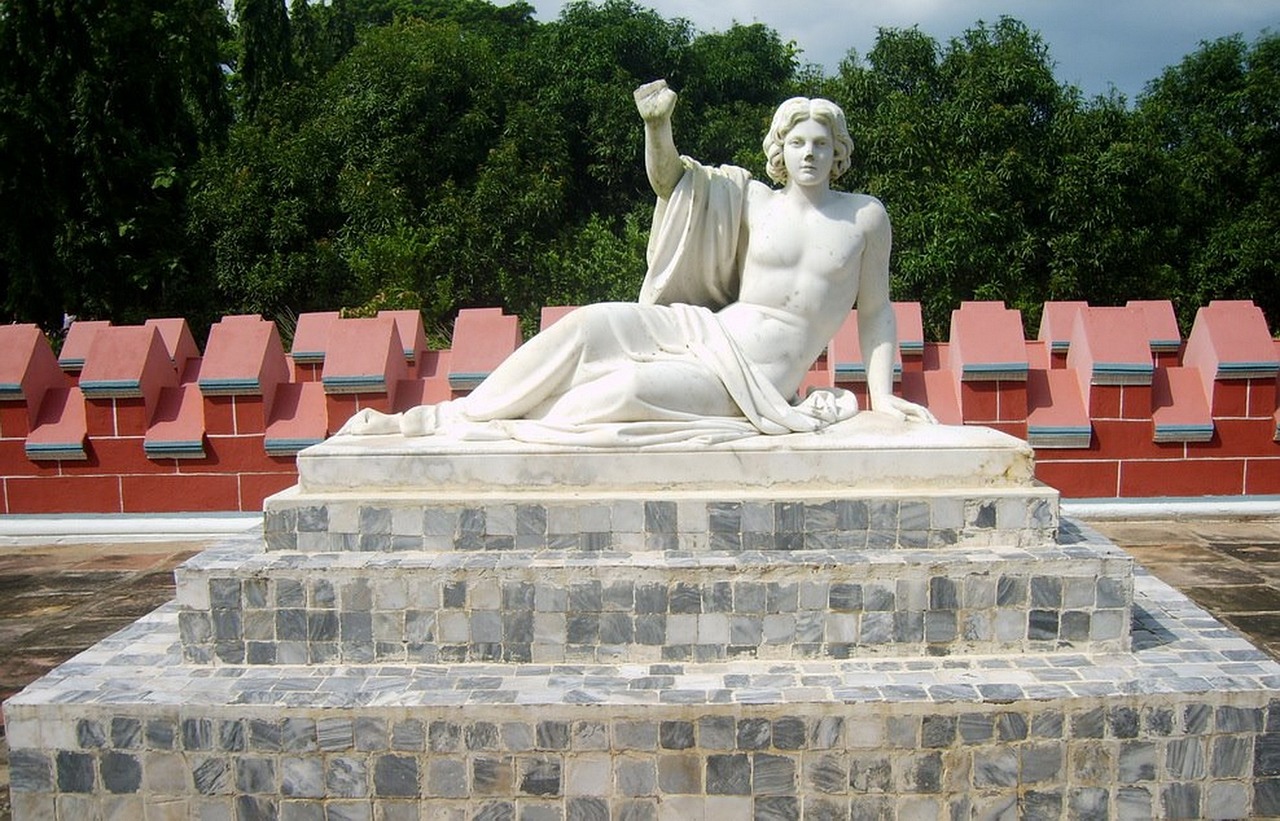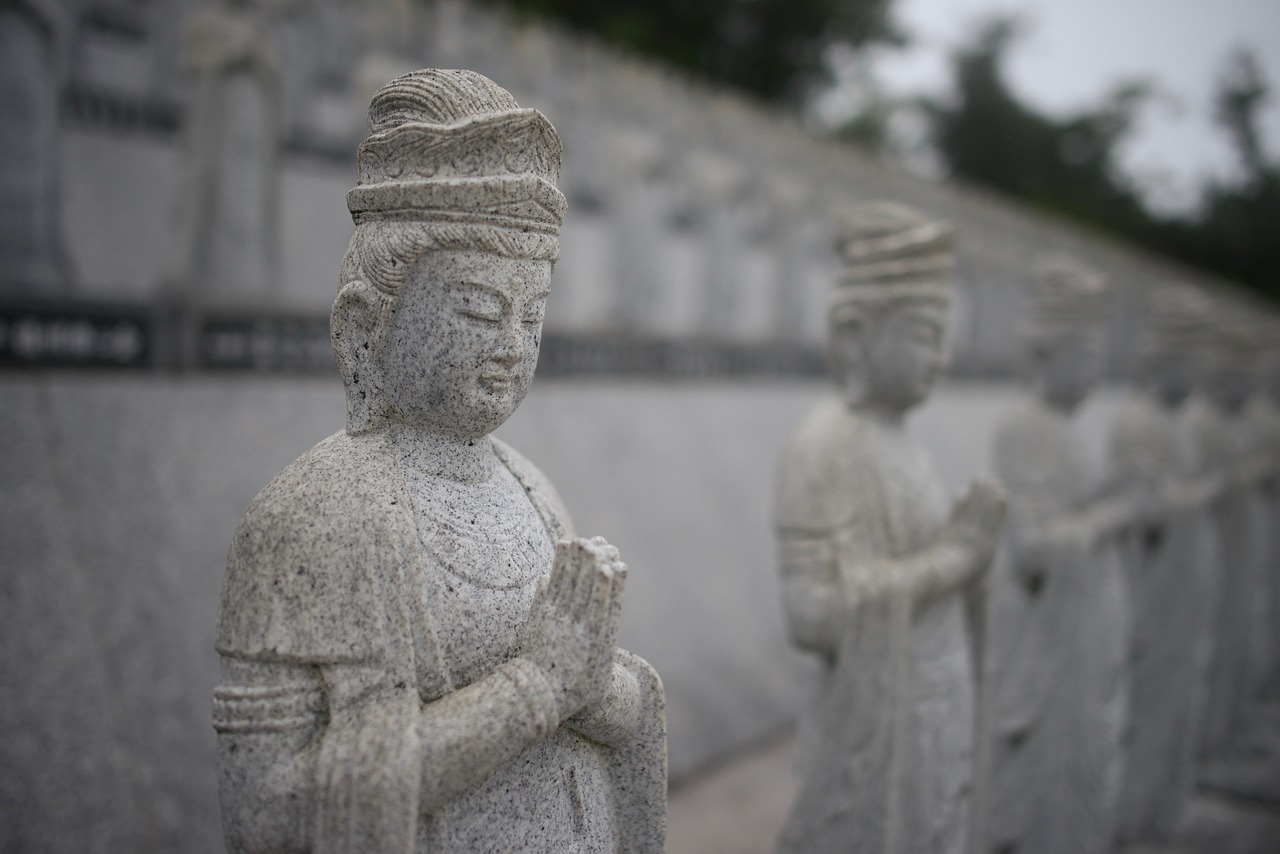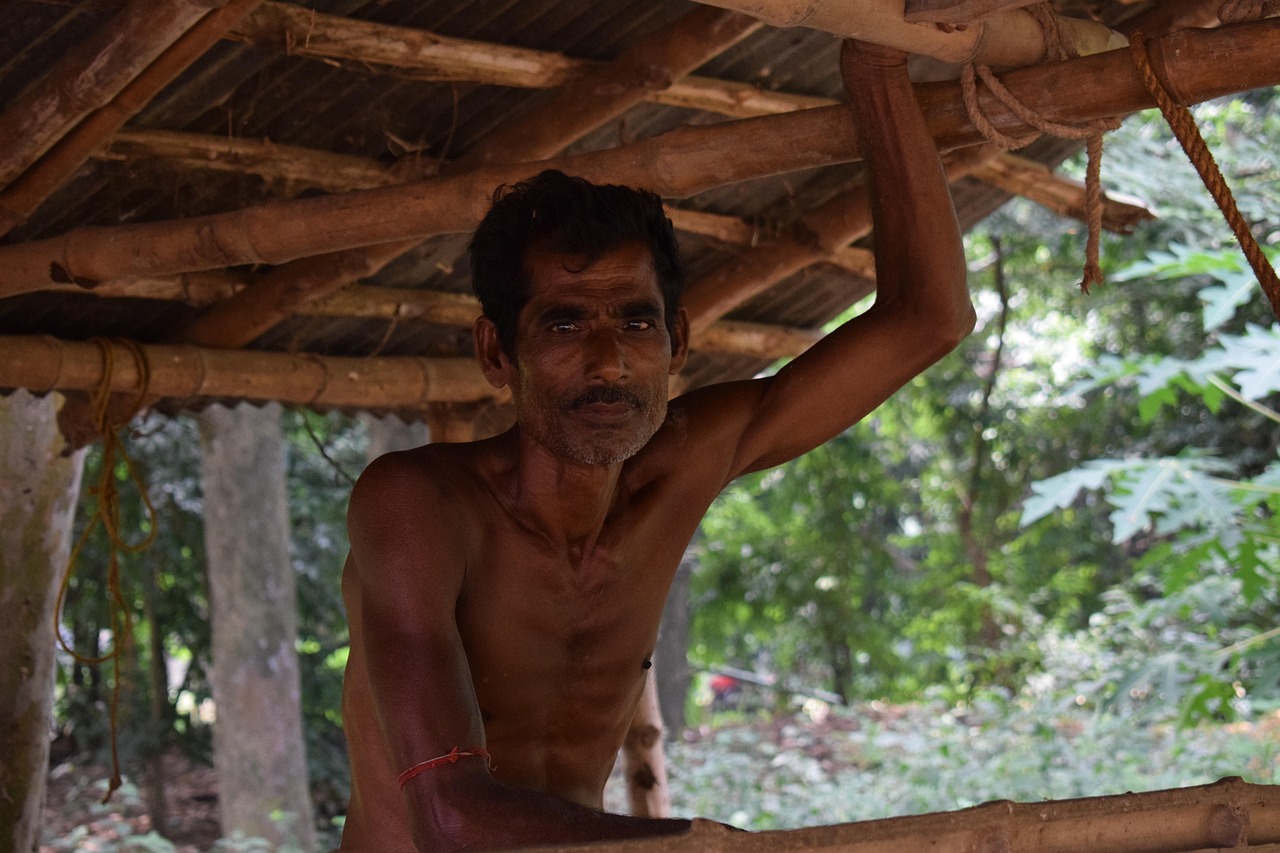This article delves into the rich heritage of West Bengal’s traditional handicrafts, examining their historical significance, techniques, and cultural impact, while highlighting the artisans who keep these crafts alive.
The Origins of West Bengal Handicrafts
Understanding the roots of West Bengal’s handicrafts reveals a tapestry of cultural influences and historical events that have shaped its artistic expressions. The region’s crafts reflect a blend of indigenous traditions and external influences, resulting in unique artistic styles.
Key Traditional Crafts of West Bengal
- Terracotta: Known for its intricate designs, terracotta art often features religious and decorative items that showcase the region’s artistic heritage.
- Textiles: The vibrant textiles of West Bengal, including the renowned Baluchari and Murshidabad sarees, embody intricate craftsmanship and cultural narratives.
- Woodwork: The skilled woodwork of West Bengal includes beautifully carved furniture and decorative items that reflect local traditions.
Terracotta Art
Terracotta art in West Bengal showcases intricate designs and traditional motifs, often used in religious and decorative items, reflecting the region’s artistic heritage.
Historical Significance of Terracotta
Terracotta has been a significant medium in West Bengal since ancient times, representing both artistic expression and functional utility in daily life.
Modern Adaptations of Terracotta
Contemporary artisans are innovating terracotta designs, merging traditional techniques with modern aesthetics to appeal to today’s market.
The Role of Artisans in Preservation
Artisans play a crucial role in preserving traditional handicrafts, passing down skills through generations and adapting to changing market demands while maintaining authenticity.
Challenges Faced by Artisans
Despite their skills, artisans face numerous challenges, including economic pressures and competition from machine-made products, threatening the survival of traditional crafts.
Empowerment Through Training Programs
Various initiatives and training programs aim to empower artisans, enhancing their skills and providing them with the tools needed to thrive in a modern economy.
The Cultural Significance of Handicrafts
Handicrafts in West Bengal are more than mere products; they are a reflection of the region’s identity, history, and social values, deeply intertwined with local traditions.
Handicrafts in Festivals and Rituals
Many handicrafts are integral to local festivals and rituals, serving as symbols of cultural heritage and community bonding, enriching the social fabric of West Bengal.
Global Recognition of West Bengal Crafts
West Bengal’s handicrafts have gained international acclaim, showcasing the region’s rich artistic legacy on global platforms and contributing to cultural exchange.
Conclusion: The Future of West Bengal Handicrafts
As West Bengal’s traditional handicrafts face modern challenges, a renewed focus on sustainability and innovation is essential to ensure their survival and relevance in the contemporary world.

The Origins of West Bengal Handicrafts
Exploring the History of West Bengal’s Traditional Handicrafts
This article delves into the rich heritage of West Bengal’s traditional handicrafts, examining their historical significance, techniques, and cultural impact, while highlighting the artisans who keep these crafts alive.
Understanding the roots of West Bengal’s handicrafts reveals the region’s cultural influences and historical events that shaped its artistic expressions. The evolution of these crafts can be traced back to ancient times, where influences from various dynasties, including the Mauryas and the Guptas, laid the groundwork for a vibrant artistic culture. The rich soil of West Bengal has nurtured not only rice and jute but also creativity and craftsmanship.
West Bengal’s location, with its proximity to rivers and trade routes, facilitated the exchange of ideas and materials, leading to a fusion of styles and techniques. This cultural melting pot has given rise to a diverse array of handicrafts, each telling a unique story of the region’s history.
Throughout the centuries, the artisans of West Bengal have incorporated elements from various cultures, including Hindu, Muslim, and British influences, into their crafts. For instance, the intricate designs of terracotta art reflect religious significance and local traditions, while the exquisite textiles showcase the artistry passed down through generations.
Moreover, the influence of festivals and rituals has been pivotal in shaping these crafts. Items created for cultural celebrations not only serve practical purposes but also embody the spiritual essence of the community. As a result, each piece of craftsmanship becomes a testament to the region’s identity and values.
In conclusion, the origins of West Bengal’s handicrafts are deeply intertwined with its history and culture, making them not just products but vital components of the region’s heritage. Understanding these roots is crucial for appreciating the richness of West Bengal’s artistic expressions.
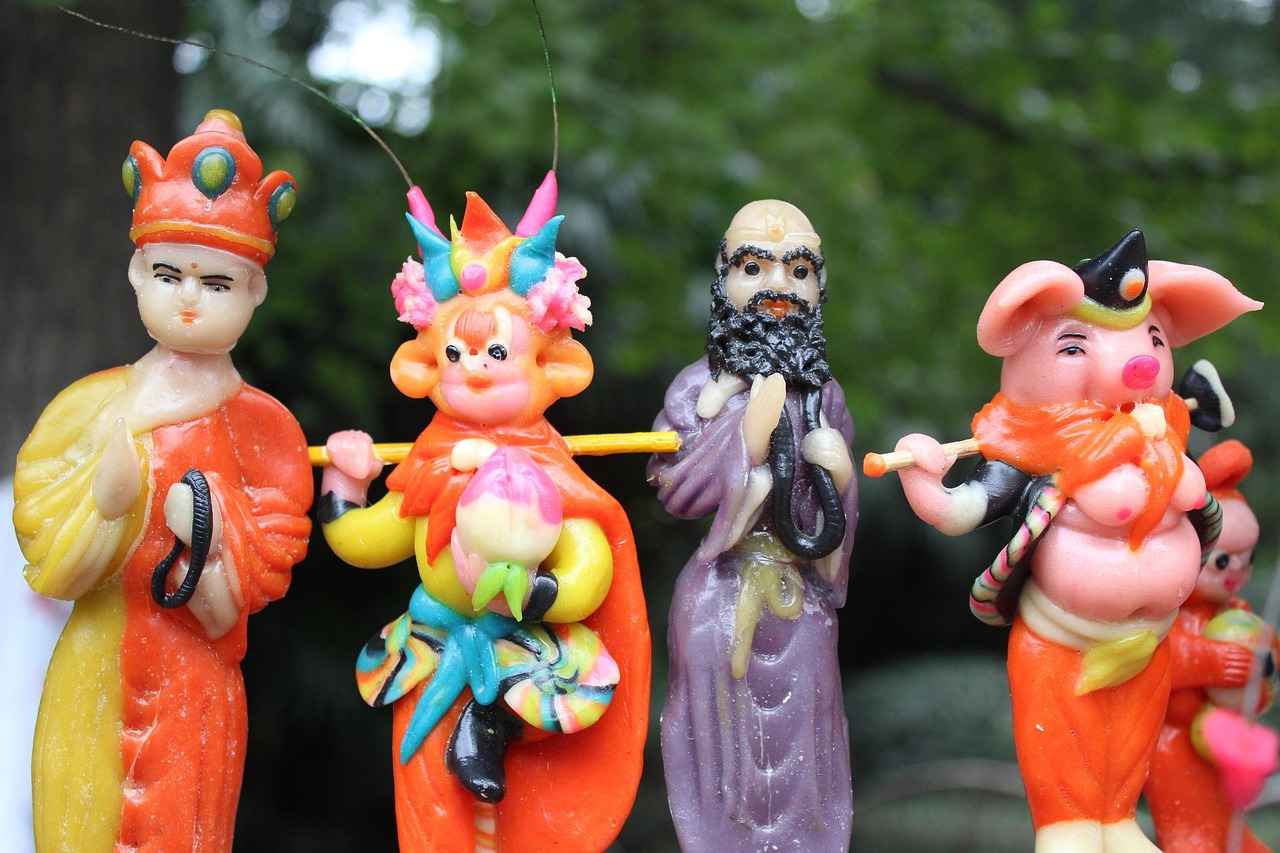
Key Traditional Crafts of West Bengal
West Bengal is a treasure trove of traditional crafts, each reflecting the region’s rich cultural tapestry and history. The crafts of this vibrant state are not just artistic expressions; they are a celebration of heritage and an embodiment of the skills passed down through generations. This article explores some of the most significant crafts, highlighting their unique stories and cultural relevance.
- Terracotta Art
Terracotta art in West Bengal is characterized by its intricate designs and traditional motifs. Often used in religious ceremonies and as decorative items, terracotta reflects the artistic heritage of the region. The craft has deep roots in history, with artisans creating pieces that serve both functional and aesthetic purposes.
- Textiles
The textile industry is another cornerstone of West Bengal’s crafts, renowned for its vibrant sarees, particularly the Baluchari and Murshidabad sarees. These textiles embody intricate craftsmanship, featuring elaborate designs that tell stories of the region’s culture and history. The artistry involved in weaving these sarees is a testament to the skill and dedication of local artisans.
- Woodwork
West Bengal’s woodwork is equally impressive, showcasing the talent of artisans who create intricate carvings and functional items. This craft often incorporates traditional motifs and designs that reflect the local flora and fauna, making each piece unique. The woodwork not only serves practical purposes but also acts as a medium for storytelling and cultural expression.
These crafts are more than just products; they are a reflection of the identity and values of the people of West Bengal. With the ongoing efforts to preserve these traditional crafts, the artisans continue to keep the heritage alive, adapting to modern trends while maintaining authenticity.
In conclusion, the traditional crafts of West Bengal are a vital part of the state’s cultural heritage. As these crafts evolve, they remain a source of pride and identity for the local communities, ensuring that the stories and skills of the past continue to thrive in the present.
Terracotta Art
in West Bengal is a vibrant expression of the region’s rich cultural heritage, showcasing a variety of intricate designs and traditional motifs. This ancient art form, primarily crafted from clay, has been an integral part of local traditions for centuries. Terracotta pieces often serve both religious and decorative purposes, reflecting the spiritual and aesthetic values of the community.
The origins of terracotta art can be traced back to ancient civilizations, where artisans used this medium to create functional items as well as decorative sculptures. Today, the art continues to thrive, with artisans employing time-honored techniques passed down through generations. Terracotta figurines, pottery, and wall panels are just a few examples of the beautiful works produced in this medium.
One of the most striking features of West Bengal’s terracotta art is its intricacy. Artisans meticulously carve designs that often depict mythological stories, floral patterns, and scenes from everyday life. These artistic expressions are not only visually captivating but also serve as a narrative of the region’s history and cultural identity.
In recent years, there has been a resurgence of interest in terracotta art, with contemporary artisans experimenting with modern designs while retaining traditional techniques. This fusion has allowed terracotta to find its place in contemporary home decor, attracting a new audience that appreciates both its aesthetic and cultural significance.
Moreover, the role of terracotta art extends beyond mere decoration; it plays a crucial part in various cultural festivals and rituals in West Bengal. Items crafted from terracotta are often used in ceremonies, symbolizing prosperity and spiritual connection.
As the world becomes increasingly aware of the importance of preserving traditional crafts, initiatives aimed at promoting terracotta art are gaining momentum. These efforts not only support artisans but also ensure that this beautiful art form continues to thrive for future generations.
In conclusion, terracotta art in West Bengal is more than just a craft; it is a vital part of the region’s cultural tapestry. Its intricate designs and traditional motifs tell stories of the past while adapting to modern sensibilities, making it a timeless art form worthy of appreciation.
Historical Significance of Terracotta
Terracotta has been an integral part of West Bengal’s artistic landscape for centuries, serving as a medium that bridges both artistic expression and functional utility in everyday life. This ancient craft has roots that can be traced back to the early civilizations of the region, where it was used for creating not just decorative items but also essential household goods.
The historical significance of terracotta in West Bengal is profound. Artisans have utilized this medium to create intricate sculptures, pottery, and religious artifacts, often reflecting the cultural and spiritual beliefs of the time. These items are characterized by their vibrant colors and unique designs, which often depict local mythology and daily life. The craftsmanship involved in creating terracotta pieces requires a deep understanding of the material, as well as a rich knowledge of traditional techniques passed down through generations.
In ancient times, terracotta was not only a form of artistic expression but also served practical purposes. For instance, terracotta pots were commonly used for cooking and storage, showcasing the duality of this medium. This blend of utility and artistry continues to resonate today, as artisans strive to maintain the cultural heritage associated with terracotta while adapting to contemporary needs.
Modern adaptations of terracotta art have emerged, with artisans experimenting with new forms and styles while preserving traditional methods. This innovation has allowed them to appeal to a broader audience, ensuring that the craft remains relevant in today’s market. As such, terracotta stands as a testament to West Bengal’s rich cultural tapestry, symbolizing both the past and the future of its artistic endeavors.
In conclusion, the historical significance of terracotta in West Bengal cannot be overstated. It serves as a vital link to the region’s cultural identity, showcasing the skill and creativity of its artisans. As we continue to explore and appreciate this art form, it is essential to recognize the efforts of those who keep these traditions alive, ensuring that terracotta remains a cherished part of West Bengal’s heritage.
Modern Adaptations of Terracotta
have become a fascinating intersection of tradition and innovation, capturing the attention of both art enthusiasts and consumers alike. In recent years, contemporary artisans in West Bengal have embarked on a journey to revitalize terracotta designs, seamlessly blending age-old techniques with modern aesthetics to cater to the evolving tastes of today’s market.
Traditionally, terracotta items were functional, serving purposes in daily life and religious practices. However, as the demand for unique and artistic home decor items has surged, artisans have reimagined these classic forms. They are now creating pieces that not only reflect cultural heritage but also resonate with contemporary design principles. For instance, minimalist vases and decorative wall hangings made from terracotta are becoming increasingly popular, appealing to a younger audience.
Artisans are also experimenting with colors and finishes, moving beyond the typical earthy tones associated with terracotta. By incorporating vibrant glazes and innovative textures, they are pushing the boundaries of what terracotta can represent in modern decor. This evolution is not just about aesthetics; it also involves sustainable practices, as many artisans are now sourcing local clay and using eco-friendly methods in their production processes.
Moreover, the integration of technology in design has opened new avenues for these artisans. 3D printing and digital modeling are being utilized to create intricate patterns that were previously challenging to achieve by hand. This fusion of technology and traditional craftsmanship allows for greater creativity and precision, ensuring that each piece is unique.
In conclusion, the are a testament to the resilience and creativity of West Bengal’s artisans. By merging traditional techniques with contemporary styles, they are not only preserving their cultural heritage but also ensuring that terracotta remains relevant in today’s fast-paced market. As these artisans continue to innovate, the future of terracotta looks promising, offering a blend of history and modernity that appeals to a wide range of consumers.
Textiles of West Bengal
hold a significant place in the cultural and artistic landscape of India. The region is particularly famous for its exquisite sarees, with the Baluchari and Murshidabad sarees standing out as symbols of intricate craftsmanship and rich cultural narratives. These textiles are not just garments; they tell stories and reflect the heritage of West Bengal.
The Baluchari saree is known for its elaborate designs, often depicting mythological scenes and motifs that are woven into the fabric. Originating from the town of Baluchari, these sarees are made using the finest silk, which is handwoven by skilled artisans. The artistry involved in creating a Baluchari saree requires immense dedication and expertise, as each piece can take several months to complete.
Similarly, the Murshidabad saree is celebrated for its soft texture and intricate patterns. Named after the historical city of Murshidabad, these sarees often feature delicate embroidery and vibrant colors. The craftsmanship involved in Murshidabad sarees reflects the region’s rich history, influenced by various dynasties that ruled over Bengal.
| Saree Type | Key Features | Material |
|---|---|---|
| Baluchari | Mythological motifs, elaborate designs | Silk |
| Murshidabad | Soft texture, intricate embroidery | Silk and cotton |
These sarees are a testament to the artistic heritage of West Bengal, showcasing the skills passed down through generations. Artisans play a vital role in preserving these traditional crafts, ensuring that the techniques and stories behind each saree are not lost to modernity.
In recent years, there has been a growing appreciation for these textiles on global platforms, leading to a resurgence in demand. This has empowered artisans and encouraged innovation while maintaining the authenticity of traditional methods.
As we continue to celebrate the , it is essential to recognize their cultural significance and the stories they carry. By supporting local artisans and promoting these crafts, we contribute to the preservation of a rich heritage that is integral to the identity of West Bengal.
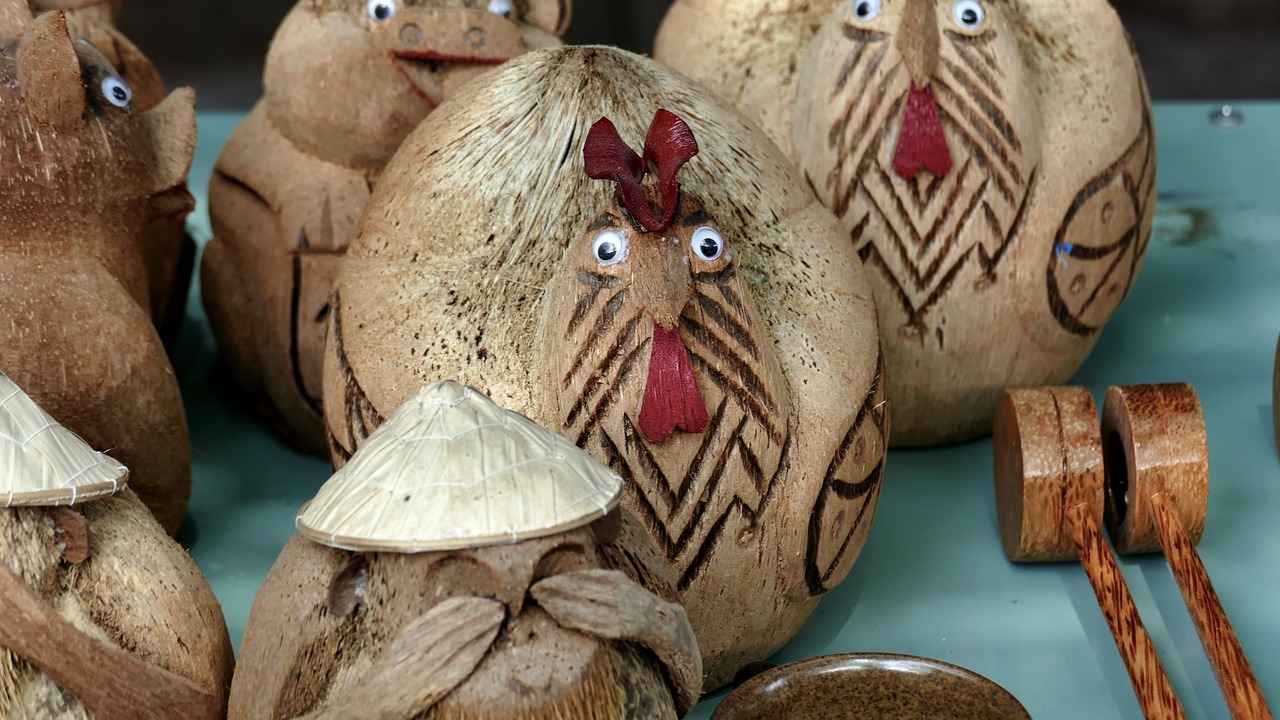
The Role of Artisans in Preservation
In the vibrant tapestry of West Bengal’s cultural heritage, artisans serve as the backbone of traditional handicrafts. These skilled individuals not only preserve age-old techniques but also ensure that the rich legacy of their craft is passed down through generations. Their role is pivotal in maintaining the authenticity of these crafts while adapting to the evolving market demands.
Artisans possess a wealth of knowledge that is often acquired through years of practice and mentorship. This intergenerational transfer of skills is crucial for the survival of traditional crafts. By teaching younger generations the intricacies of their art, artisans create a bridge between the past and the future. This process not only fosters a sense of pride but also instills a deeper appreciation for cultural heritage among the youth.
Moreover, artisans are adept at adapting to modern trends, which helps them stay relevant in a competitive market. While they honor traditional methods, they also incorporate contemporary designs and materials to attract a broader audience. This dual approach allows them to maintain their craft’s authenticity while ensuring its viability in today’s economy.
Despite their invaluable contributions, artisans face numerous challenges. The rise of machine-made products has led to increased competition, often threatening the existence of traditional handicrafts. Economic pressures and a lack of access to markets further complicate their situation, making it essential to support these artisans through various initiatives.
To combat these challenges, several organizations and government programs are focused on empowering artisans. Training programs that enhance their skills and provide marketing support are crucial for their sustainability. By equipping artisans with the necessary tools and knowledge, these initiatives aim to ensure that traditional handicrafts continue to thrive.
In conclusion, artisans play an indispensable role in preserving the rich heritage of West Bengal’s traditional handicrafts. Their dedication to maintaining authenticity while adapting to modern demands is vital for the survival of these crafts. Supporting artisans not only helps preserve cultural identity but also enriches the social fabric of the region.
Challenges Faced by Artisans
Artisans are the backbone of many traditional crafts, yet they encounter a myriad of challenges that threaten their livelihoods and the preservation of their art forms. This article explores the significant hurdles faced by artisans, particularly in regions like West Bengal, where traditional handicrafts are a vital part of cultural heritage.
- Economic Pressures: Many artisans struggle to make a sustainable income from their crafts. The rising cost of materials and living expenses often forces them to compromise on quality or quantity, which can diminish the value of their work.
- Competition from Machine-Made Products: The influx of mass-produced items has created fierce competition. These products are often cheaper and more readily available, making it difficult for artisans to compete, despite the superior quality and craftsmanship of their handmade goods.
- Lack of Market Access: Artisans frequently find it challenging to reach broader markets. Limited access to online platforms and retail spaces restricts their ability to showcase their crafts to potential buyers, further impacting their sales.
- Preservation of Traditional Techniques: As younger generations move towards urbanization and modern careers, there is a growing risk that traditional skills and techniques will be lost. This generational gap poses a significant threat to the survival of many crafts.
- Need for Innovation: While maintaining traditional methods is essential, artisans must also adapt to changing consumer preferences. Balancing innovation with tradition can be a daunting task, as it requires new skills and resources.
Despite these challenges, many artisans are finding ways to adapt and thrive. Through community support, training programs, and a renewed interest in sustainable practices, there is hope for the future of traditional crafts. Empowering artisans not only preserves cultural heritage but also enriches the economy and promotes social cohesion.
In conclusion, while artisans face numerous obstacles, their resilience and creativity continue to shine through. By addressing these challenges collectively, we can ensure that traditional crafts remain a vibrant part of our cultural landscape for generations to come.
Empowerment Through Training Programs
In the vibrant landscape of West Bengal’s traditional handicrafts, the role of artisans is paramount. To ensure that these skilled craftsmen thrive in an ever-evolving economy, various initiatives and training programs have been launched. These programs aim to empower artisans by enhancing their skills and providing them with essential tools and resources.
Many of these training programs focus on skill development, offering workshops that teach both traditional techniques and modern business practices. This dual approach not only preserves the rich heritage of West Bengal’s crafts but also equips artisans with the knowledge to navigate the complexities of today’s market.
- Skill Enhancement: Workshops that focus on intricate techniques, ensuring artisans maintain high standards of craftsmanship.
- Business Acumen: Training that includes marketing strategies, financial literacy, and e-commerce skills, enabling artisans to sell their products effectively.
- Innovation and Design: Programs that encourage creativity, allowing artisans to explore new designs and materials while staying true to traditional methods.
Furthermore, these initiatives often collaborate with local and international organizations to provide artisans with access to broader markets. By connecting them with potential buyers, these programs help artisans gain visibility and recognition for their work, which is crucial for their economic sustainability.
Moreover, community engagement plays a vital role in these empowerment initiatives. By fostering a sense of community among artisans, these programs not only enhance individual skills but also promote collective growth. This collaborative spirit is essential in preserving the unique cultural identity of West Bengal’s handicrafts.
In conclusion, the various training programs and initiatives aimed at empowering artisans are crucial for the survival and growth of West Bengal’s traditional crafts. By enhancing skills and providing necessary tools, these programs ensure that artisans can thrive in a modern economy while preserving their rich cultural heritage.

The Cultural Significance of Handicrafts
Handicrafts in West Bengal are not just products; they are a vivid expression of the region’s rich cultural tapestry, embodying its history, social values, and artistic traditions. These crafts serve as a bridge connecting the past with the present, reflecting the unique identity of the communities that create them.
Every piece of handicraft tells a story, often rooted in the local folklore and traditions that have been passed down through generations. For instance, the intricate designs found in terracotta art and textiles are not merely decorative; they carry deep meanings and historical significance. Artisans pour their skills and emotions into each creation, making every item a testament to their heritage.
Moreover, handicrafts play a pivotal role in local festivals and rituals. They are integral to celebrations, symbolizing cultural heritage and community bonding. Items such as handcrafted idols, traditional attire, and decorative pieces are often used in ceremonies, enhancing the spiritual and cultural experience of these events.
In addition to their cultural importance, handicrafts contribute significantly to the local economy. They provide livelihoods for numerous artisans and their families, fostering a sense of community and social cohesion. However, with the advent of modern technology and mass production, these traditional crafts face challenges that threaten their existence.
Efforts are being made to revitalize these crafts through training programs and initiatives aimed at empowering artisans. By enhancing their skills and providing access to modern markets, these programs help ensure that the legacy of West Bengal’s handicrafts continues to thrive in the contemporary world.
In conclusion, the cultural significance of handicrafts in West Bengal extends beyond their aesthetic appeal. They are a vital part of the region’s identity, reflecting its history and social values while providing economic opportunities for artisans. Preserving these crafts is essential not only for maintaining cultural heritage but also for nurturing the communities that rely on them.
Handicrafts in Festivals and Rituals
In West Bengal, the vibrant tapestry of handicrafts is intricately woven into the fabric of local festivals and rituals. These crafts not only serve as decorative elements but also symbolize the cultural heritage and community spirit of the region. From the colorful Durga Puja to the serene Poush Mela, each event showcases unique handicrafts that resonate with the traditions and values of the local populace.
The significance of handicrafts during festivals can be observed in various forms:
- Religious Offerings: Items such as clay idols, hand-painted decorations, and intricate ritualistic items are crafted specifically for worship and celebration.
- Community Bonding: The process of creating these handicrafts often involves community participation, fostering a sense of unity and collaboration among artisans and locals.
- Preservation of Traditions: Each craft tells a story, preserving the historical narratives and cultural practices of West Bengal, ensuring that these traditions are passed down through generations.
Furthermore, many artisans dedicate their skills to creating items that are not only functional but also serve as symbols of identity. For instance, during Durga Puja, the creation of elaborate pandals and idols reflects the community’s artistic expression and devotion.
As festivals evolve, so do the handicrafts associated with them. Artisans are increasingly incorporating modern techniques and designs while retaining traditional elements, allowing these crafts to resonate with both local and global audiences.
In conclusion, the role of handicrafts in West Bengal’s festivals and rituals is profound. They are not just decorative pieces but are vital to the cultural identity and community bonding, enriching the social fabric of the region. As we celebrate these traditions, it is essential to support the artisans who keep these practices alive, ensuring that the rich heritage of West Bengal continues to thrive.
Global Recognition of West Bengal Crafts
The traditional handicrafts of West Bengal have achieved remarkable international recognition, highlighting the region’s rich artistic legacy and cultural significance. These crafts, which include textiles, terracotta, and intricate woodwork, not only showcase the skills of local artisans but also serve as a bridge connecting diverse cultures across the globe.
One of the key factors contributing to the global acclaim of West Bengal’s handicrafts is their unique blend of traditional techniques and contemporary design. Artisans have embraced innovation while honoring age-old methods, allowing their creations to resonate with both local and international audiences. For instance, the exquisite Baluchari sarees are not just garments; they are stories woven into fabric, often depicting mythological themes that captivate buyers worldwide.
Furthermore, various international exhibitions and craft fairs have provided a platform for West Bengal artisans to present their work, fostering cultural exchange and appreciation. These events not only promote the crafts but also empower artisans by connecting them with global markets, thus enhancing their economic stability. The participation of artisans in such events has led to a growing recognition of their craftsmanship, allowing them to gain visibility and respect beyond borders.
In addition to exhibitions, the rise of online platforms has further amplified the reach of West Bengal handicrafts. By leveraging e-commerce, artisans can now showcase their products to a wider audience, breaking geographical barriers. This digital shift has enabled them to share their stories, craftsmanship, and the cultural significance behind their work, fostering a deeper understanding and appreciation among consumers.
In conclusion, the global recognition of West Bengal’s handicrafts is a testament to the region’s rich artistic heritage and the resilience of its artisans. As they continue to innovate and adapt, these crafts not only contribute to the local economy but also serve as a vibrant symbol of cultural identity on the world stage.
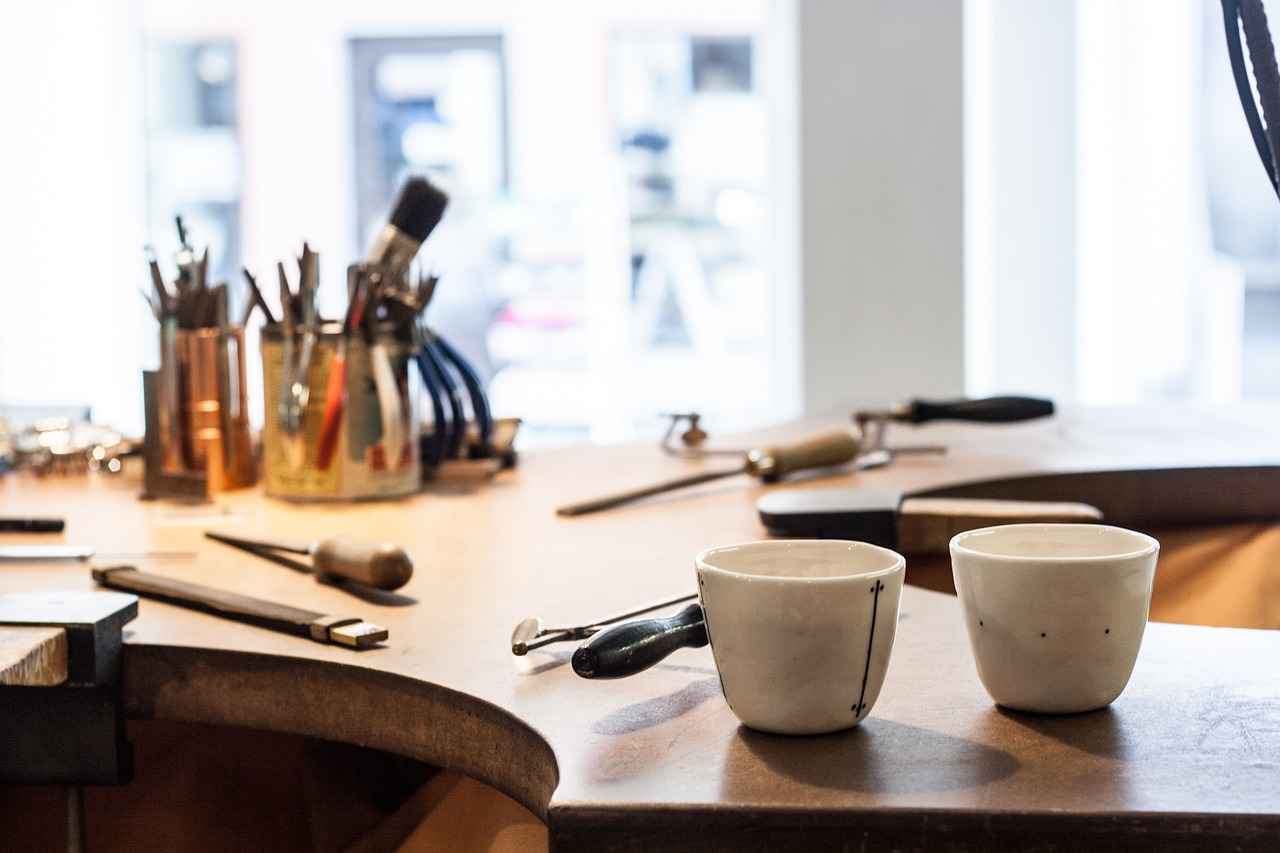
Conclusion: The Future of West Bengal Handicrafts
As West Bengal’s traditional handicrafts encounter the pressures of modernity, it becomes increasingly vital to embrace sustainability and innovation to preserve these invaluable cultural treasures. The landscape of handicrafts is shifting, influenced by changing consumer preferences and technological advancements. To navigate these challenges effectively, stakeholders must adopt a multifaceted approach.
- Emphasizing Sustainable Practices: Artisans can integrate eco-friendly materials and techniques into their processes, appealing to a growing market of environmentally conscious consumers.
- Leveraging Technology: The use of digital platforms for marketing and sales can significantly broaden the reach of traditional crafts, connecting artisans with global audiences.
- Encouraging Collaborative Efforts: Partnerships between artisans, designers, and businesses can foster innovation while maintaining the authenticity of traditional crafts.
- Investing in Training and Education: Providing artisans with the necessary skills to adapt to modern market demands is essential for their survival and growth.
Moreover, the cultural significance of these handicrafts must be highlighted in contemporary narratives. They represent more than just products; they are a reflection of identity, history, and community values. By promoting the stories behind these crafts, artisans can create a deeper connection with consumers, enhancing the perceived value of their work.
In conclusion, the future of West Bengal’s handicrafts hinges on a balance between tradition and modernity. By prioritizing sustainability, embracing innovation, and fostering community engagement, these crafts can thrive in the contemporary world, ensuring that the rich heritage of West Bengal continues to be celebrated for generations to come.
Frequently Asked Questions
- What are the main traditional handicrafts of West Bengal?
West Bengal is famous for its diverse handicrafts, including terracotta art, intricate textiles like Baluchari and Murshidabad sarees, and exquisite woodwork. Each craft has its own unique history and cultural significance, showcasing the region’s rich artistic heritage.
- How do artisans preserve traditional crafts?
Artisans play a vital role in preserving traditional handicrafts by passing down skills through generations. They adapt to modern market demands while maintaining authenticity, ensuring that these crafts continue to thrive in contemporary society.
- What challenges do artisans face today?
Despite their incredible skills, artisans in West Bengal face several challenges, including economic pressures and competition from machine-made products. These factors threaten the survival of traditional crafts, making it crucial to support and empower these talented individuals.
- Why are handicrafts important to West Bengal’s culture?
Handicrafts are more than just products; they reflect the identity, history, and social values of West Bengal. They are deeply intertwined with local traditions and play a significant role in festivals and rituals, enriching the cultural fabric of the region.
- How can I support West Bengal’s handicrafts?
You can support West Bengal’s handicrafts by purchasing handmade products, participating in local craft fairs, or even spreading awareness about these unique art forms. Every little effort helps keep these traditions alive and thriving!
























































